Jirisan Manbokdae Peak (지리산 만복대)
14.6 Km 24999 2021-02-05
Sandong-myeon, Gurye-gun, Jeollanam-do
+82-61-780-7700
Manbokdae Peak in the west soars at the boundary between Sandong-myeon, Gurye-gun and Namwon-si at 1,433.4 meters above sea level. ”Man” means “full of something” and “bok” means “fortune.” Like the name, Manbokdae is considered as a fortunate mountain with great views as it is surrounded by smooth hills. According to an old story, Manbokdae Peak was chosen as one of the 10 scenic areas, where people come to receive good fortune.
Jirisan Chilseongyegok Valley (칠선계곡(지리산))
14.8 Km 34739 2022-07-29
Chuseong-ri, Hamnyang-gun, Gyeongsangnam-do
+82-55-970-1000
Chilseongyegok Valley is the most beautiful valley in Jirisan Mountain, and is one of the top three valleys in the nation, along with Cheonbuldonggyegok Valley in Seoraksan Mountain and Tamnagyegok Valley in Hallasan Mountain. The 16-kilometer valley stretching from Uitan of Macheon-myeon to Cheonwangbong Peak is characterized by very tough topography but beautiful scenery and is the only remaining primeval forest of Jirisan Mountain. It is also dotted with seven waterfalls and 33 ponds. The hike becomes more difficult as the trail enters the valley. Because the valley has taken many lives, some people call it "The Valley of Death." For that reason, visitors must apply in advance and hike with a guide. The trail in Chilseon Valley is a 9.4-kilometer course from Chuseong Village in Macheon-myeon to Cheonwangbong Peak, which does not follow the natural valley, due to the valley's steep and dangerous features. Starting from Chuseong Village, the trail passes Yongso Pond, Jujiteo Site, Chuseongmang Rock, Seonnyeotang Pond, Ongnyeotang Pond, Biseondam, Chilseonpokpo Falls, Daeryukpokpo Falls, Samcheungpokpo Falls and Mapokpo Falls, all before reaching Cheonwangbong Peak.
Hamyang Daebong Mountain Valley Resort (함양대봉산휴양밸리)
15.5 Km 0 2024-02-21
331 Byeonggokjigok-ro, Byeonggok-myeon, Hamyang-gun, Gyeongsangnam-do
Hamyang Daebong Mountain Valley Resort is a recreation and tourism complex at the foot of Daebongsan Mountain in Hamyang. This resort boasts an array of attractions, including a mountain monorail and a zipline, offering exhilirating experiences amidst natural beauty. Addtionally, guests can enjoy various accommodation and and camping facilities, along with a forest park, blending adventure and relaxation seamlessly. The zipline itself, positioned 1,200 meters above sea level, spans an impressive length of 3.27 kilometers, providing an unforgettable aerial journey over the landscape.
Ten Scenic Views of Jirisan (지리산 10경)
15.5 Km 38488 2024-04-07
Sandong-myeon, Gurye-gun, Jeollanam-do/ Namwon-si, Jeonbuk-do/ Hadong-gun& Hamnyang-gun& Sancheong-gun, Gyeongsangnam-do
+82-55-970-1000
Its deep valleys and unique mountain formations are what make Jirisan Mountain truly spectacular. It consists of numerous peaks, and is known to be well-preserved and clean. Ten Scenic Views of Jirisan Mountain are particular memorable and simply breathtaking.
Perhaps Jirisan Mountain’s most signature highlight is its incredible sunrise; the scarlet sunlight from the horizon in the east is spectacular, and arguably the best place to watch it in Korea. The second highlight is Piagol Autumn Leaves. At the village, walk 10 minutes further towards Piagol and you will come to a pine forest at the edge of Jeollanam-do and Gyeongsangnam-do. It is called Piagol, the best broad-leaved tree forest in Jirisan Mountain area. The autumnal colors of Piagol are some of the best in the world. Every year the Autumn Leaves Festival is held here. The third notable highlight is the Nogodan Sea of Clouds. Located to the west of Jirisan Mountain, Nogodan Peak is said to boast the most outstanding views of Jirisan Mountain. If you climb up to the peak following the Hwaeomsa Valley, at times the sea of clouds are visible from below the peak. The fourth selected highlight is Banyabong’s Sunset. Banyabong Peak is a huge dome shaped feature. One of the big joys of climbing Banyabong is to see the sunset. The fifth notable feature is the full moon; the beautiful scarlet sky together with the black mountain line produce an exquisite painted background to the rising of the moon. The sixth highlight is the royal azalea blossoming between the rocks. In the spring, the royal azaleas blanket the mountain. There is a field that extends 1,200 meters in the southern area of Jirisan Mountain covered with flowers known as Royal Azalea Plateau. The seventh feature is the deep waterfall between the peaks of Cheonghakbong and Baekhakbong. The 60-meter waterfall produces a tremendous sound. The eighth is the vast view of the mountain range towards Cheonwangbong Peak. The ninth feature is the Chilseongyegok Valley. With its roots in Cheonwonbong Peak, it is one of our nation’s three best valleys. According to legend, seven gods are said to be living in Chilseongyegok Valley. Finally, the tenth most scenic feature is Seomjincheongryu. Flowing southwesterly across Jirisan Mountain and into the south coast, the Seomjingang River is so clear that it is sometimes compared to blue silk. The white sandy beaches on either side of the river are also very beautiful.
Banghwadong Recreational Forest (방화동 자연휴양림,가족휴가촌)
16.1 Km 6039 2024-04-07
778, Banghwadong-ro, Jangsu-gun, Jeonbuk-do
+82-63-350-2474
Banghwadong Recreational Forest is located at the foot of Jangansan Mountain. The mountain trail from Deoksanyongso Pond leading to Banghwadonggyegok Valley features nature learning centers and adventure games facilities. The clean valley is lined with oddly shaped cliffs, shrubs and trees, which all combine into a splendid view. The forest is situated at a highland more than 500 meters above sea level. It is surrounded by mountains that are over a thousand meters above sea level, so the temperature is low and the water at the valley is cool even in the summer.
There are log cabins, group accommodation facilities, and training halls by the valley to accommodate group visits, conferences, gatherings and seminars. The recreational forest also operates Banghwadong Family Vacation Village for family visitors, equipped with accommodation facilities, various camping sites, and a wood carving experience center.
Namwon Recreational Forest (남원자연휴양림)
17.1 Km 14671 2024-04-07
228, Bosan-ro, Namwon-si, Jeonbuk-do
+82-63-633-5333
Namwon Recreational Forest is located at the base of Cheonhwangsan Mountain. Korean pine trees that are twenty to thirty years old span over a 330,578 ㎡ stretch of land with a 4-kilometer-long walking path in between, serving as the perfect place for forest bathing. The recreational forest facility is equipped with convenient facilities, including accommodations, a sports field, seminar rooms, and swimming pool and campfire sites. It also serves as a great field trip destination due to its well-preserved nature and small wild animals witnessed on site.
Tomb of King Guhyeong, Sancheong (산청 전 구형왕릉)
17.3 Km 18145 2020-06-30
Guhyeongwangneung-ro, Sancheong-gun, Gyeongsangnam-do
+82-55-970-6411
This stone grave is known to be the tomb of King Guhyeong, the 10th King of the Gaya Kingdom. He is also known as King
Guhae or King Yang, and is the grandfather of Kim Yoo Shin. Since becoming
the King of Gaya in 521 AD, he reigned for 11 years until he handed over his
country to King Beopheung of the Silla Kingdom in 532 AD.
There are two
different scholarly opinions about this tomb. One is that it should be classified as a stone pagoda and the
other, a royal tomb. The reason why this was regarded as a pagoda is
that there are similarly shaped stone pagodas in the Andong and Uiseong regions.
The basis for it being called Wangreung, or royal tomb, is that there is a record in Dongguk Yeoji Seongram (an
ancient history book published during the rule of King Seongjong in the Joseon dynasty) and
in Saneum-hyeon Sancheonjo (a record of events in the region) of it being a
tomb. The
notes state that "there is a structure with steps on
the four faces, in the form of nine dragons piled up of stones at a distance
of about 16 km (40 ri in traditional Korean scale) from the village, so
people believe it must be a royal tomb".
The record describing the name of the king buried
in this tomb can be extracted from a record of travels called Wangsan Shimreunggi
written by Hong Ui Young, a Joseon dynasty scholar. In addition, there’s also
an entry in Wangsansagi, a book on the history of Wangsansa Temple (a
temple located west of the tomb) that the person buried in the tomb is King Guhyeong.
Unlike ordinary
graves, the tomb is built at the middle part of the hill's slope. The tomb
has a unique appearance made up of steps and layers, with the highest point
being 7.15 meters high. There are seven layers at the front and no steps at
the back due to it being built on an inclined surface. The overall shape of
this tomb is different from the pyramids built on level ground. The top of the tomb is oval in
shape. At the center, there is a stone tablet with the words "Royal Tomb of King Yang of the
Garak Nation". In front of the tomb, there are several stone pieces that
have been added to the original tomb.
During the 17th Year of King
Jeongjo of the Joseon dynasty (1793), a wooden box that was passed down from generation
to generation in Wangsansa Temple was discovered. The box contained portraits
of King Guhyeong and his queen, their clothes, an archery bow, and other objects. To
preserve these, a royal building called Deogyangjeon Hall was
constructed. To this date, a memorial service is held here in spring and
autumn of every year.
Gurye Sansuyu Village (구례 산수유마을)
17.4 Km 23411 2020-04-25
6-12, Wianwolgye-gil, Gurye-gun, Jeollanam-do
+82-61-783-9114
Sandong-myeon in the Gurye-gun region is widely known as the home of sansuyu (cornus fruit) and is responsible for 70% of Korea’s sansuyu fruit production. The Sansuyu Village, located at the foot of the southwest side of Manbokdae Mountain (1,433 meters), is considered the region’s most representative village of sansuyu. The village has a beautiful natural landscape with the snow-covered Jirisan Mountain range to its back and a small valley to its right.
Visitors to the village can wind down at the hot spring complex nearby, which is famous for its germanium content and said to have numerous health benefits. The sansuyu flowers of Sansuyu Village typically are at full bloom between March 20 and March 31, drawing throngs of visitors.
* Please note that blossom dates are not exact and change slightly from year to year.
Jirisan Taegojae (Jeongilpum Farm) (지리산태고재 (정일품농원))
18.5 Km 0 2024-01-08
39-2 Gaepyeong-gil, Jigok-myeon, Hamyang-gun, Gyeongsangnam-do
Located on a hill overlooking Gaepyeong Hanok Village, this place is popular as it serves as a filming location for many movies and dramas, including "Mr. Sunshine (2018)." It is a unique traditional hanok (traditional Korean house) complex with tile-roofed houses and thatched houses, presenting guests with a quiet night stay at hanok. It consists of Jeongilpum, Traditional Room, Hakseondang, and Chwiundang, with a total of 10 rooms. In particular, thatched houses are a traditional architectural form that is difficult to find elsewhere, so staying over at least once is recommended. It is also famous for its Korean table d’hote restaurant. The traditional Korean food made with seasonal ingredients is served only to in-house guests.
Gaepyeong Hanok Village (개평한옥마을)
18.6 Km 48576 2024-01-31
59 Gaepyeong-gil, Jigok-myeon, Hamyang-gun, Gyeongsangnam-do
Gaepyeong Hanok Village is where more than 60 large and small hanok (traditional Korean house) buildings with over 100 years of history are located within a traditional atmosphere. The village was named Gaepyeong using the letter gae (meaning “stuck between") as it is situated between Deokgaecheon Stream and Silgaecheon Stream. Visitors can observe the typical form of Gyeongsang region's yangban (aristocrat) house in this village, known as the hometown of scholars and writers since ancient times. The historical House of Ildu, which stands out first when entering Jigok-myeon where Gaepyeong Hanok Village is located, was also used as a filming location for dramas such as "Mr. Sunshine (2018)" and "Toji, the Land (2004)." The scenery of the stone walls, in harmony with the antique hanok, offers a calming sensation. In addition, visitors can participate in various experience programs, such as pressed flower craft, dasik (tea confectionery) making, and walking on trails held throughout the village, as well as gochujang (red chili paste) making at Roh's Old House of Gaepyeong-ri, which has the oldest anchae (women’s quarters) in the village.
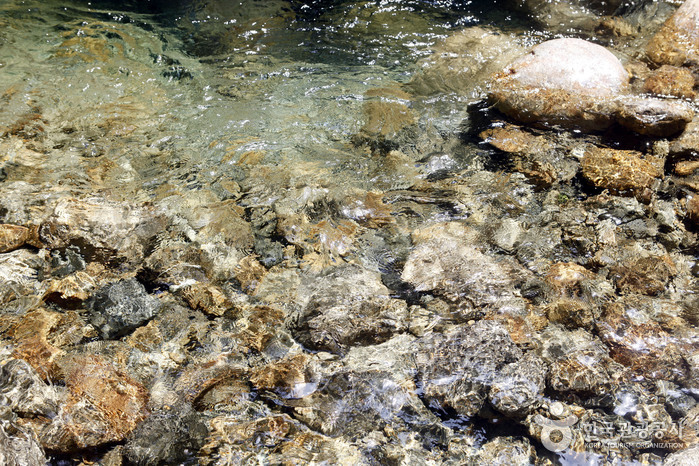
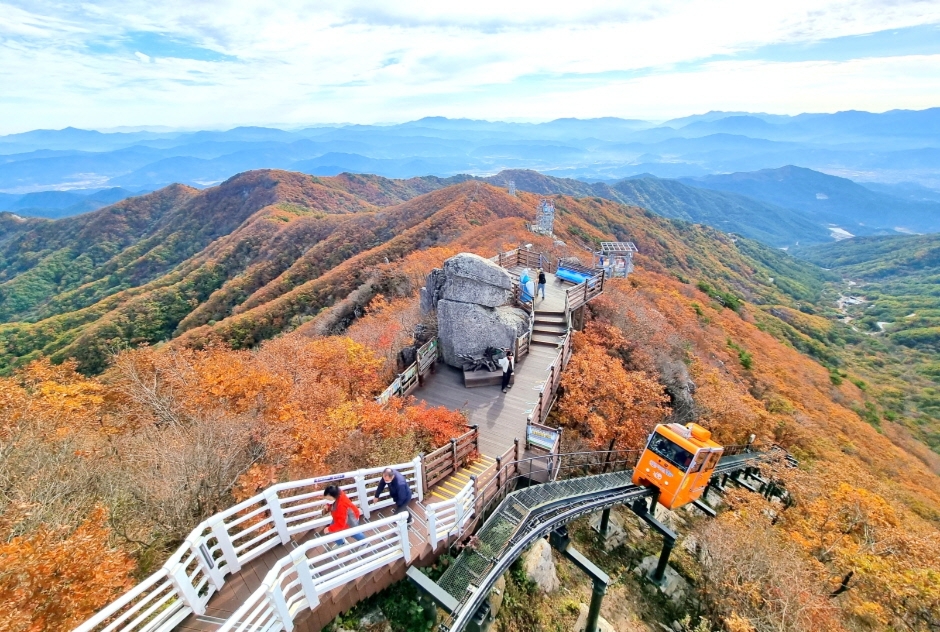
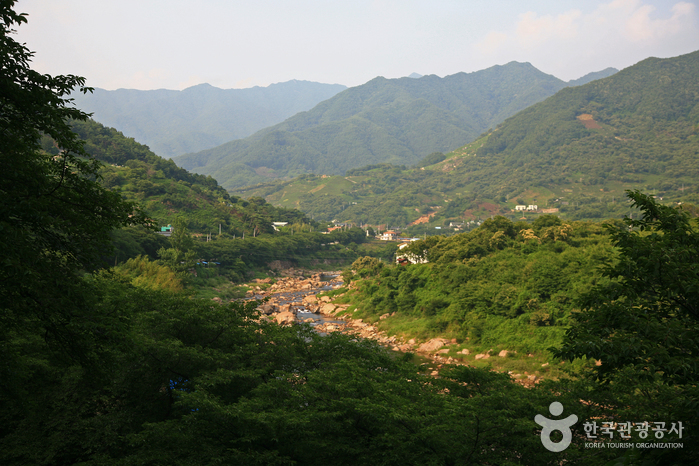

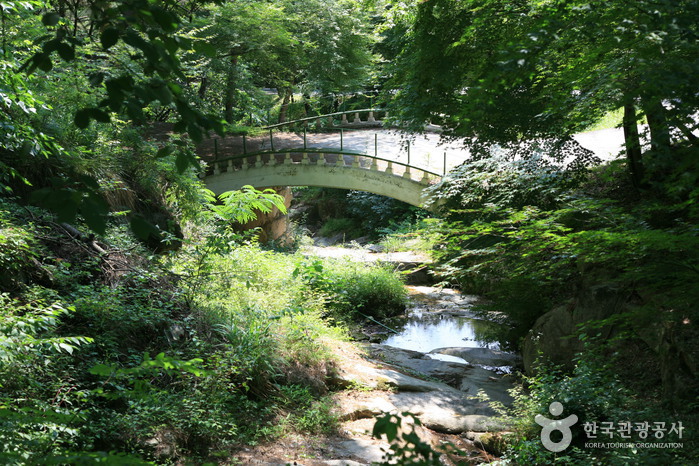
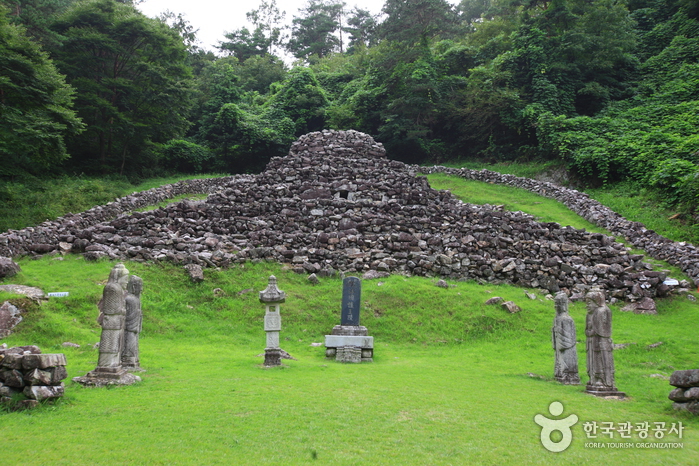
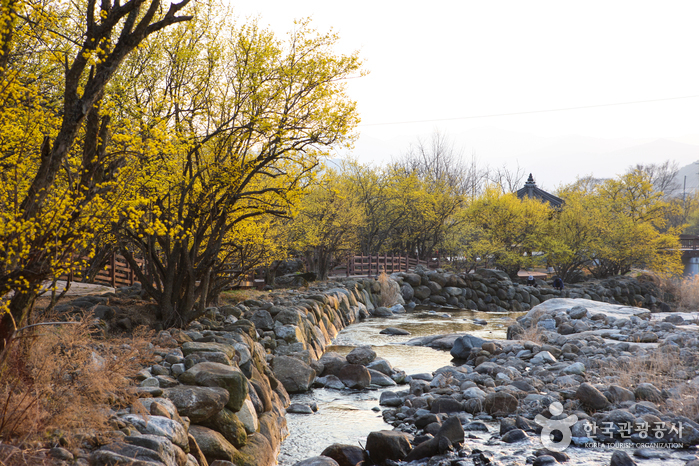
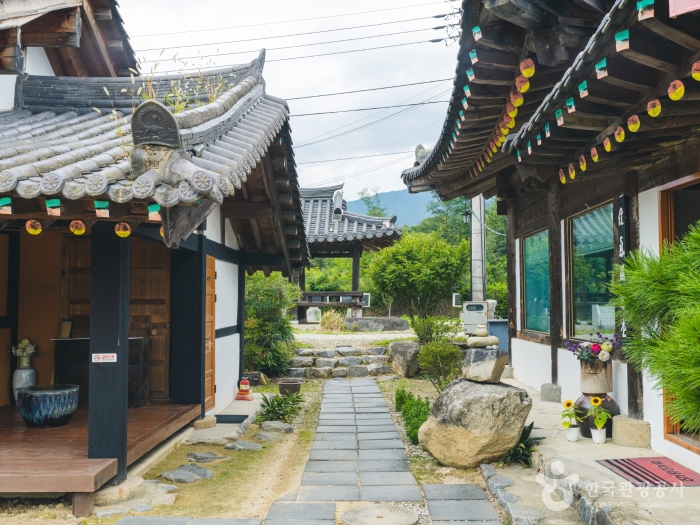
 English
English
 한국어
한국어 日本語
日本語 中文(简体)
中文(简体) Deutsch
Deutsch Français
Français Español
Español Русский
Русский